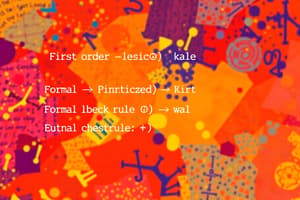Podcast
Questions and Answers
What does the Latin word 'in-ferre' mean?
What does the Latin word 'in-ferre' mean?
- to deny or negate
- to compare or contrast
- to bear or to produce (correct)
- to analyze or evaluate
How many types of inference are mentioned in the text?
How many types of inference are mentioned in the text?
- Four
- Two (correct)
- Five
- Three
What is the characteristic of Mediate Inference?
What is the characteristic of Mediate Inference?
- It has no premises
- It has no conclusion
- It has a middle proposition (correct)
- It involves only two propositions
What is the characteristic of Immediate Inference?
What is the characteristic of Immediate Inference?
What is the 'traditional square of opposition' related to?
What is the 'traditional square of opposition' related to?
What is the conclusion of the Mediate Inference example provided?
What is the conclusion of the Mediate Inference example provided?
What is the first requisite for opposition?
What is the first requisite for opposition?
What is the oppositional relation between two propositions that differ both in quantity and quality?
What is the oppositional relation between two propositions that differ both in quantity and quality?
Which of the following sets of opposition is under contrariety?
Which of the following sets of opposition is under contrariety?
What is the oppositional relation between two particular propositions that differ as to their quality?
What is the oppositional relation between two particular propositions that differ as to their quality?
What is the total number of oppositional relations in Aristotelian logic?
What is the total number of oppositional relations in Aristotelian logic?
What is the requisite for determining the truth value of the opposite proposition?
What is the requisite for determining the truth value of the opposite proposition?
What is the conclusion when a universal statement is false according to Rule 2b?
What is the conclusion when a universal statement is false according to Rule 2b?
What is the relationship between contraries according to Rule 1?
What is the relationship between contraries according to Rule 1?
What is the conclusion when a contrary is true according to Rule 1?
What is the conclusion when a contrary is true according to Rule 1?
What is the relationship between contraries according to Rule 2?
What is the relationship between contraries according to Rule 2?
What is the conclusion when a contrary is false according to Rule 2?
What is the conclusion when a contrary is false according to Rule 2?
What is the relationship between sub-contraries according to Rule 1?
What is the relationship between sub-contraries according to Rule 1?
What is the implication of the universal being true according to Rule 1a?
What is the implication of the universal being true according to Rule 1a?
What is the relationship between I and A according to Rule 1a?
What is the relationship between I and A according to Rule 1a?
What is the result when applying the rule of contrariety to a true statement?
What is the result when applying the rule of contrariety to a true statement?
What is the relationship between sub-contraries according to the Law of Sub-contrariety?
What is the relationship between sub-contraries according to the Law of Sub-contrariety?
What is the implication of the particular being true according to Rule 1b?
What is the implication of the particular being true according to Rule 1b?
What is the relationship between O and E according to Rule 1b?
What is the relationship between O and E according to Rule 1b?
What is the truth value of the statement 'Some students are not persons' if 'All students are persons' is true?
What is the truth value of the statement 'Some students are not persons' if 'All students are persons' is true?
What is the implication of the particular being false according to Rule 2a?
What is the implication of the particular being false according to Rule 2a?
What is the result when applying the rule of sub-alternation to a false statement?
What is the result when applying the rule of sub-alternation to a false statement?
What is the relationship between the statements 'All trees are plants' and 'No trees are plants'?
What is the relationship between the statements 'All trees are plants' and 'No trees are plants'?
What is the relationship between I and A according to Rule 2a?
What is the relationship between I and A according to Rule 2a?
What is the truth value of the statement 'Some politicians are not women' if 'Some politicians are women' is true?
What is the truth value of the statement 'Some politicians are not women' if 'Some politicians are women' is true?




